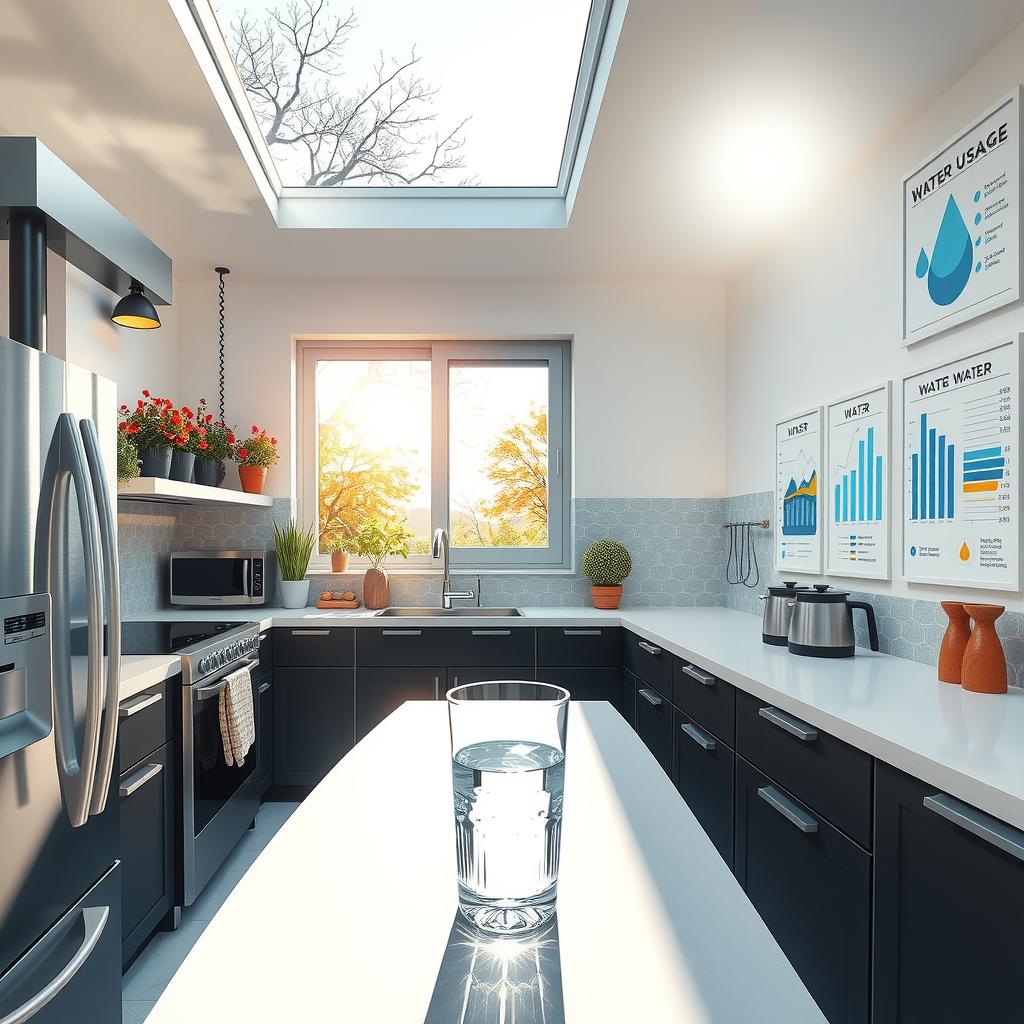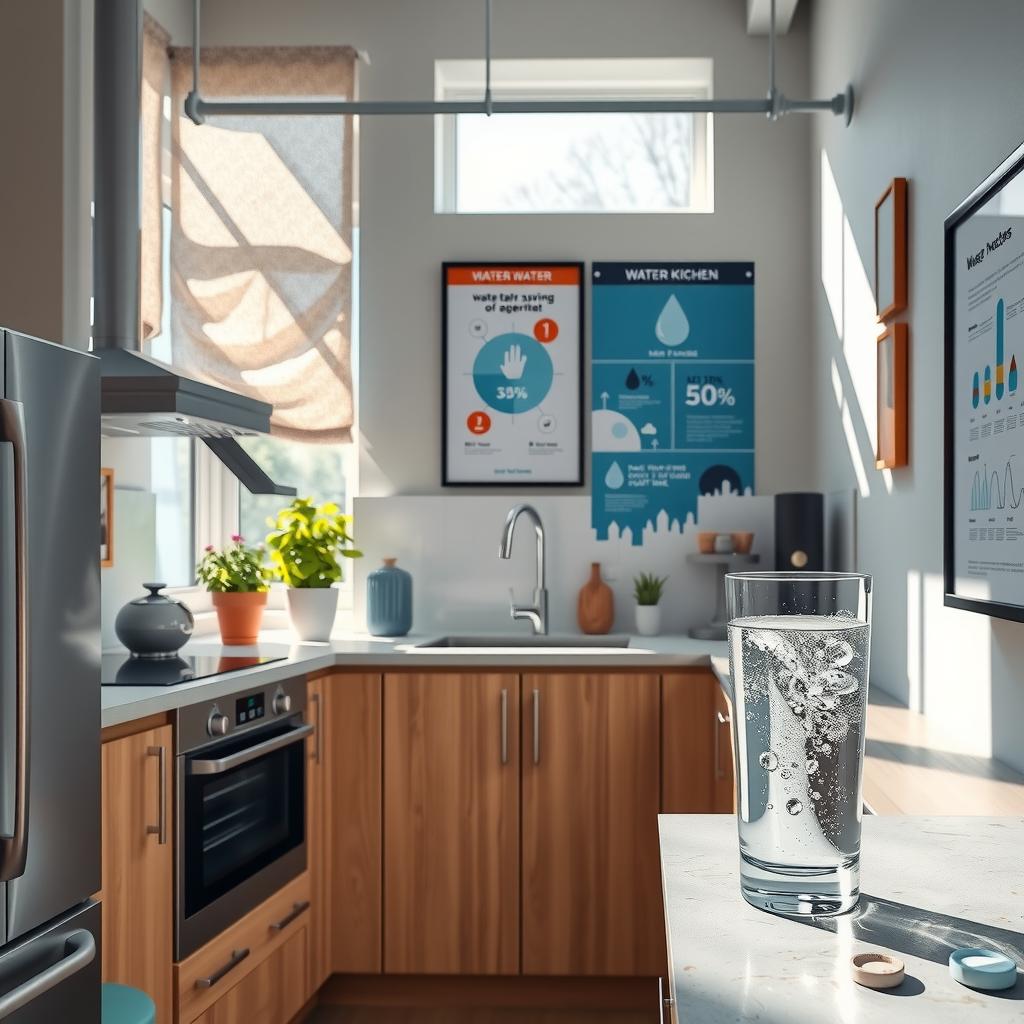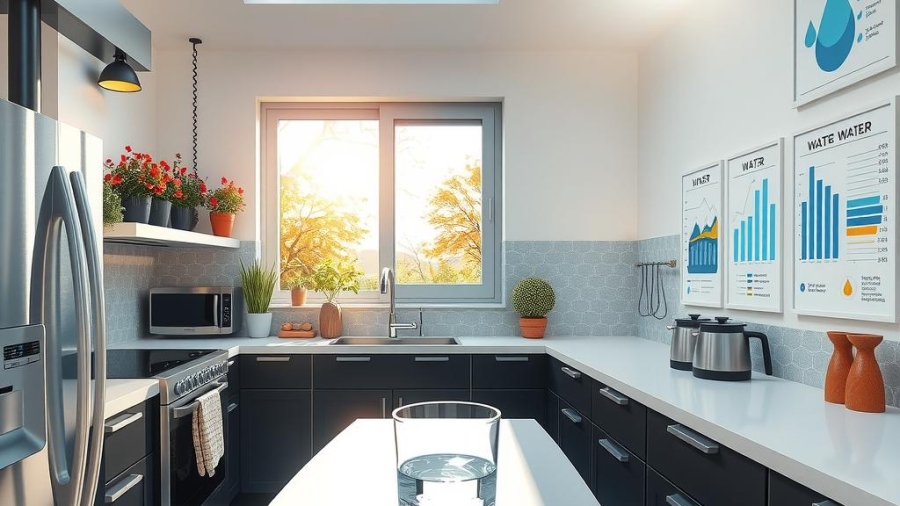In an era where water scarcity is becoming an increasingly pressing issue, adopting effective Water Conservation Techniques at home can significantly contribute to global efforts in preserving this precious resource. Homeowners often underestimate the impact of their daily habits on their overall water footprint, leading to unnecessary waste and higher bills. By implementing simple yet effective strategies, families can not only reduce their daily water consumption but also foster a sustainable approach that promotes environmental stewardship.
One of the most straightforward methods for achieving remarkable results in water conservation is through the installation of modern water-efficient fixtures such as low-flow faucets and showerheads. These innovations are designed to minimize water usage without compromising performance, making them an essential component of any responsible household’s plumbing system. In addition, integrating water-saving appliances, like dishwashers and washing machines that are specifically engineered for efficiency, allows households to further decrease their total water consumption while maintaining convenience.
Another key area where homeowners can make significant strides in reducing their overall consumption is through proper maintenance and proactive measures regarding household leaks detection. Leaks may seem minor, but they often contribute considerably to wasted resources over time if left unaddressed. Implementing routine checks for signs of leaks and taking immediate action to fix those issues can lead to substantial reductions in both wasted water and utility costs.
For those looking into more extensive solutions, establishing practices like rainwater harvesting presents an innovative way to supplement regular water supply while supporting garden health with a sustainable twist. Utilizing collected rainwater for irrigation purposes not only minimizes reliance on municipal sources but also enhances gardening practices by promoting thoughtful cultivation methods within a framework of sustainability.
Moreover, embracing techniques associated with sustainable gardening practices—such as xeriscaping or using drought-resistant plants—can further lower outdoor watering needs while beautifying one’s yard or garden space. By focusing on these aspects alongside regular habit changes highlighted by various daily tips aimed at reducing water usage, individuals will discover how small adjustments collectively yield big results.
Through consistent application of these diverse approaches encapsulated under the umbrella term Water Conservation Techniques, every homeowner has the potential not just to conserve water but also inspire others within their community toward similar eco-friendly choices that foster long-term sustainability.

Key points:
- Title of the key point: Understanding Your Water Footprint
A comprehensive insight into one’s water footprint is essential for anyone looking to implement effective water conservation strategies. By evaluating daily activities and identifying areas where water usage can be reduced, individuals can make informed decisions that lead to more sustainable practices. The guide on Water Conservation Techniques emphasizes the importance of tracking individual consumption patterns, which helps in recognizing opportunities to lower overall water usage. - Title of the key point: Installing Water-Efficient Fixtures and Appliances
Upgrading to water-efficient fixtures and appliances is a straightforward yet impactful approach to reducing household water consumption. Implementing these advancements not only supports personal efforts in conserving resources but also contributes significantly toward a greener future. The recommendations within the Water Conservation Techniques provide detailed information on selecting appropriate products that maximize efficiency without sacrificing performance, thereby playing a critical role in minimizing one’s environmental impact. - Title of the key point: Detecting and Fixing Household Water Leaks
Household leaks are often an overlooked contributor to excessive water waste. Identifying and resolving these issues promptly is crucial for effective water conservation. Utilizing insights from Water Conservation Techniques, homeowners can learn practical methods for leak detection and repair, ultimately leading to notable reductions in their daily water consumption. Making it a routine practice ensures that even small changes contribute positively towards achieving sustainable living goals while maintaining awareness about one’s overall water footprint.

Understanding Your Water Footprint
The Importance of Calculating Daily Water Usage
Assessing daily water consumption is essential for understanding one’s water footprint and identifying opportunities to reduce water usage. Individuals can calculate their total water use by adding up the amounts used in various activities such as showering, washing dishes, laundry, and watering gardens. A thorough analysis often reveals surprising insights; for instance, a typical household may consume over 300 gallons of water per day without realizing it. By implementing Water Conservation Techniques, households can significantly lower their overall consumption. Simple changes like installing water-efficient fixtures or using water-saving appliances not only help in conserving resources but also lead to cost savings on utility bills. Moreover, adopting sustainable gardening practices that focus on drought-resistant plants and mulch can further optimize outdoor water usage.
Assessing Areas for Improvement
Identifying Hidden Water Waste
Understanding the intricacies of daily routines allows individuals to pinpoint areas where they can improve their water conservation efforts. Common culprits include long showers and overwatering lawns—practices which contribute heavily to an inflated water footprint. Households should conduct regular audits to detect leaks; even minor leaks from faucets or toilets can waste thousands of gallons annually if left unaddressed. Utilizing tools like moisture meters in gardens ensures that plants receive just the right amount of hydration without excess runoff into storm drains or sidewalks, thereby supporting sustainable gardening initiatives while respecting local ecosystems. Additionally, awareness campaigns about rainwater harvesting techniques offer innovative solutions for capturing this valuable resource during rainy seasons.
Effective Daily Water Consumption Tips
Implementing Practical Strategies
Incorporating effective daily tips into routine life aids in minimizing unnecessary consumption while promoting a greener lifestyle aligned with modern sustainability goals. For example, practicing mindful habits—such as turning off the tap while brushing teeth or opting for shorter showers—can collectively save significant amounts of water each year when applied consistently across households within communities. Encouragingly, many municipalities now offer rebates for installing efficient irrigation systems designed specifically for landscape management rather than conventional sprinklers which often oversaturate soil too quickly leading to runoff issues instead of deep absorption necessary during dry spells—a classic case where adopting proper Water Conservation Techniques proves beneficial both ecologically and economically.
The Role of Technology in Water Management
Innovative Solutions at Home
Modern technology plays a pivotal role in managing household water use effectively through smart devices that monitor real-time consumption patterns directly related to specific appliances or fixtures around the home environment itself—the integration fosters greater accountability among residents towards reducing their overall impact on local freshwater supplies leading back again towards improving one’s personal water footprint. Installing leak detection systems alerts homeowners immediately upon any irregularities detected thereby facilitating prompt repairs necessary before larger-scale damages occur within plumbing infrastructures—all these actions culminate into improved environmental stewardship driven largely by embracing contemporary innovations available today combined with traditional wisdom surrounding conservation practices such as those highlighted earlier regarding garden maintenance alongside seasonal rainfall collection strategies employed via rain barrels positioned strategically throughout property lines ensuring maximum efficiency when needed most particularly during drier months ahead!

Transforming Spaces with Water-Efficient Fixtures
A Sustainable Approach to Modern Living
In the pursuit of sustainability, upgrading to water-efficient fixtures is critical for reducing household water consumption. By incorporating innovative designs and technologies, these fixtures not only serve functional purposes but also significantly lower a home’s overall water footprint. For instance, low-flow toilets can drastically cut down on the amount of water used per flush—often from an average of 3.5 gallons to as little as 1.28 gallons—without sacrificing performance. Similarly, faucet aerators can be installed easily in kitchens and bathrooms, providing a steady stream while minimizing excess flow rates. This integration of Water Conservation Techniques helps homeowners align their daily activities with broader environmental goals by actively participating in water conservation efforts.
Moreover, advanced showerheads designed for efficiency can save up to 40% more water than traditional models while still delivering adequate pressure and comfort during use. The adoption of such water-saving appliances extends beyond simple aesthetics; it fosters a lifestyle that embraces mindful resource management while enhancing the quality of life at home. These upgrades often come equipped with smart technology that tracks usage patterns over time, allowing users to adjust habits accordingly and become more conscious about their daily water consumption tips.
Enhancing Functionality through Advanced Appliances
Smart Solutions for Water Management
Investing in modern appliances goes beyond mere functionality; it’s about adopting solutions that address pressing global issues like climate change through practical actions at home. Energy-efficient dishwashers utilize less water than hand-washing dishes and incorporate features such as soil sensors that optimize cycles based on load cleanliness levels—a testament to how innovation drives efficiency without compromising results. Such products epitomize effective Water Conservation Techniques, merging technology with sustainability seamlessly.
Furthermore, washing machines featuring high-efficiency options consume significantly less water per cycle compared to older models while maintaining exceptional cleaning power thanks to enhanced drum designs and wash settings tailored for different fabric types and load sizes. This not only reduces total daily water consumption but also alleviates stress on municipal systems which are often strained during peak usage times due to inefficient practices prevalent amongst outdated equipment within households.
Beyond appliance upgrades alone lies an opportunity for homeowners: integrating rainwater harvesting systems into landscaping projects or sustainable gardening practices further enhances overall efficiency by utilizing naturally sourced resources rather than relying solely on treated potable supplies from local utilities.
Proactive Measures Against Household Leaks
Detecting Problems Before They Escalate
Addressing potential sources of waste is paramount when considering how best one might improve upon existing setups around the home related specifically towards reducing unnecessary waste via leaks detection measures incorporated into plumbing systems or individual appliances themselves serves as another facet aligned closely alongside implementing various Water Conservation Techniques.
By employing devices capable of monitoring usage trends continuously throughout households enables early identification regarding any irregularities indicative perhaps even unnoticed dripping faucets or improperly sealed joints contributing excessive wastage over time left unchecked may lead significant financial burdens coupled alongside environmental ramifications if left unresolved long-term exacerbating already dire circumstances surrounding limited freshwater reserves globally today necessitating immediate action taken proactively fix those pesky leaks before they grow worse!
The importance placed upon addressing leak-related issues cannot be overstated given statistics showing approximately 10% homes facing substantial losses exceeding nearly 90 gallons every day attributed solely toward undetected plumbing faults combined together highlighting urgency behind prompt remediation efforts undertaken swiftly ensure optimal conservation outcomes realized effectively across communities everywhere striving achieve greener living spaces collectively working towards shared objectives centered around responsible stewardship natural resources available locally regionally worldwide alike ensuring everyone benefits maximally possible resulting positive changes initiated promptly wherever feasible applied consistently maintain standards established promoting healthier environments both indoors outdoors alike ultimately leading brighter future overall all humanity!
Integrating Sustainability into Daily Routines
Small Changes Yield Big Results
Individuals looking forward embracing environmentally friendly lifestyles should consider making small yet impactful changes within their everyday routines focusing primarily upon elements conducive fostering sustainability principles ingrained deeply throughout operations performed routinely inside outside premises where people reside work play unwind socializing friends family members alike should always keep forefront mind priority placed mitigating adverse effects caused extensive drain precious H2O available precious few places globally sustainably managed properly encouraging maximal effectiveness witnessed situations evolve favorably better health well-being obtained collaboratively driving larger initiatives supporting community awareness programs designed educate populace regarding significance conserving vital resources wisely thus safeguarding generations following ahead too benefitting great lengths achieved together united collective vision focused achieving higher standard living ultimately turning aspirations reality dreams conceptualized previously shaping legacy leave behind future stewards planet entrusted inheritably caring diligently pursuing ideals central connectedness inherent relationship established between human beings environment nurtured responsibly developed intentionally practiced habitually instilling values passed along descendants demonstrating commitment preserving integrity earth’s ecosystems flourishing harmoniously coexisting balance maintained thriving amidst challenges encountered journey undertaken lifetime spent striving progress equitably sustainably fulfilling promises made caretakers entrusted guardianship planet nurturing lives whole-heartedly encompassing spirit cooperation respect understanding compassion extending outreach bridging gaps separating individuals diverse backgrounds cultures coming together unified purpose underscoring necessity collaboration dynamic ongoing pursuit
Behavioral Changes for Conservation
Simple Daily Practices to Reduce Water Consumption
In an era where water scarcity is becoming increasingly prevalent, implementing mindful habits can lead to significant reductions in overall water consumption. The concept of water conservation extends beyond merely fixing leaks; it encompasses a holistic approach that includes adopting daily practices aimed at minimizing the water footprint. By integrating strategies from the product name Water Conservation Techniques, individuals can transform their routines and contribute positively to environmental sustainability. One effective strategy involves utilizing water-efficient fixtures, such as low-flow showerheads and faucets, which drastically reduce the amount of water used without sacrificing performance. These fixtures not only lower daily water usage but also decrease energy bills associated with heating water.
Moreover, investing in water-saving appliances, like dishwashers and washing machines designed with efficiency in mind, further enhances these efforts by ensuring that each cycle uses minimal amounts of water while still delivering optimal cleaning results. Many households overlook simple maintenance tasks that can significantly impact their overall consumption; therefore, incorporating regular checks for household leaks detection becomes vital. Detecting and addressing issues such as dripping faucets or running toilets not only conserves precious resources but also helps families save money on their utility bills over time.
Sustainable gardening practices offer another avenue through which individuals can effectively manage their water use. Techniques such as rainwater harvesting allow homeowners to collect and store rainwater for irrigation purposes, reducing reliance on municipal sources during drier periods. Implementing drought-resistant plants within gardens ensures that landscapes remain vibrant without necessitating excessive watering regimes—another principle highlighted within the framework of Water Conservation Techniques. Additionally, practicing mindful watering schedules by irrigating early in the morning or late in the evening minimizes evaporation loss due to heat exposure.
Furthermore, engaging in community initiatives focused on promoting awareness around these topics fosters a culture of conservation among peers and neighbors alike. By sharing experiences regarding how they have successfully reduced their household’s daily consumption through tips learned from products like Water Conservation Techniques, people encourage others to join them on this journey toward sustainable living practices.
Ultimately, transforming one’s lifestyle into one that prioritizes efficient resource management requires dedication yet offers profound rewards—not just for individual households but also for communities striving towards collective ecological responsibility. Embracing simple changes—whether installing more efficient appliances or adapting garden designs—fuels a broader movement committed to long-term preservation efforts essential for future generations’ well-being.
Understanding one’s water footprint is essential for anyone looking to implement effective strategies for reducing water usage. By assessing how much water is consumed in daily activities, individuals can identify areas where improvements can be made. Utilizing the product Water Conservation Techniques aids users in recognizing their consumption patterns and provides tailored solutions to minimize waste. This awareness not only encourages responsible behaviors but also fosters a culture of sustainability that benefits both households and the environment.
Installing water-efficient fixtures and choosing water-saving appliances are practical steps toward achieving significant reductions in daily water consumption. The product Water Conservation Techniques offers insights into selecting the best fixtures such as low-flow showerheads, dual-flush toilets, and ENERGY STAR-rated dishwashers. These upgrades not only contribute to a greener future but often reduce utility bills as well, making them economically wise choices too.
Incorporating sustainable gardening practices plays a crucial role in conserving water at home. Techniques such as drip irrigation systems, mulching, and creating drought-resistant landscapes significantly decrease outdoor water use while maintaining beautiful gardens. The guidance provided by the product Water Conservation Techniques emphasizes methods like rainwater harvesting to collect runoff from roofs for irrigation purposes or general household needs, effectively utilizing natural resources while minimizing reliance on municipal supplies.
Commonly Asked Questions:
Q: How can I assess my home’s water footprint?
A: Individuals can begin by tracking their monthly water bills or using online calculators designed to estimate overall consumption based on lifestyle factors.
Q: What types of fixtures should I consider installing for better efficiency?
A: Opting for low-flow faucets, showerheads, dual-flush toilets, and high-efficiency washing machines will yield substantial savings over time.
Q: How do I detect household leaks effectively?
A: Regularly checking your meter readings before and after periods of no use can help indicate leaks; additionally, inspecting visible pipes for moisture or damage is advisable.
Q: What behavioral changes most significantly impact daily water consumption?
A: Simple actions like shortening showers, turning off taps while brushing teeth or washing dishes, and fully loading dishwashers before running them contribute greatly towards reduced usage.
